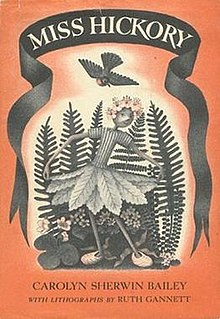Module 7: Realistic Fiction
The School Story by Andrew Clements

Clements, A. (2001) The School Story [Kindle edition]. Retrieved from Amazon.com
Plot Summary
Natalie, a twelve-year old, is finishing her novel, The Cheater, which focuses on a girl and her best friend. Zoe, Natalie's best friend, encourages her to try and get it published. Natalie's mother, Hannah Nelson, works for Shipley Junior Books, so Natalie wants to get her to edit her book. However, Natalie doesn't want her mother to know that The Cheater was written by her. To get around this, Natalie creates a pseudonym, Cassandra Day, and Zoe acts as her literary agent with the nickname "Zee Zee." Although she is reluctant at first, Ms. Clayton, the girls English teacher, agrees their adviser after she reads Natalie's story.
The girls rent out an office, with the help of Ms. Clayton, for their Sherry Clutch Literary Agency. The girls submit The Cheaters to Natalie's mother. Letha Springfield and Hannah love the book. Letha, who sees the potential of the book, takes over as editor. Zoe, as Zee Zee, argues with Letha and says that Cassandra, aka Natalie, will only write with Hannah as her editor. Letha refuses and declares that the book will not be published at Shipley unless Zee Zee and Cassandra apologize. Instead, Zoe sends a copy of The Cheaters to Tom Morton, the president of Shipley, and a list of the conditions that Zoe and Natalie require. Tom loves the story and places Hannah back as the editor.
When offered a contract, Natalie and Zoe show it to Zoe's father, who is a lawyer. With his approval, the girls get Natalie's Uncle Fred to sign in place of Hannah. Zoe's father is impressed with Ms. Clayton and the girls. He goes on to speak to Ms. Clayton in order to cover the cost off the office, which she had previously been paying for the girls.
At the end of The School Story, Zoe convinces Hannah to throw a publication party for The Cheater and Zoe arranges for press to be at the event. Although Natalie doesn't originally know about the event, she uses the opportunity to reveal to her mother that she is Cassandra Day. The press run a story about the book and the journey behind it. To top it all off, The Cheater becomes a hit!
Impressions
I had read Frindle when I was a kid and I was very interested to read another Andrew Clements' work. I was yet again drawn in by Clements as he creates a realistic journey for the two girls. I felt like the book went beyond the every day school story when Clements addressed Natalie's loss of her father through The Cheater, which had a strong story about the relationship between a father and daughter. I feel like this is extremely relatable to children who have lost a parent and want to express how much they miss them. The reveal of the plot of The Cheater and how it ties in to Natalie's life was definitely my favorite part of the book.
Reviews
Publisher's Weekly. (2001) The School Story [Book Review]. Retrieved
from http://www.publishersweekly.com/978-0-689-82594-1
"Clements's (Frindle) absorbing novel centers on Natalie, a 12-year-old aspiring author who, since her father died in an automobile accident, lives alone with her mother, Hannah, a children's book editor for a New York City publisher. As the book opens, Natalie's best friend, Zoe, is reading the novel that Natalie is writing. The impulsive, take-charge Zoe decides it is good enough to be published and hatches a scheme to ensure that it is. The path from manuscript to bound book takes some funny turns, as the girls elicit the aid of their English teacher, who rents office space that serves as the faux headquarters of Natalie's self-appointed agent: Zoe. Clements strikes a poignant note with his plot within a plot, since the youngster's novel tells of a girl whose father stands up for her always—even when she is caught cheating in school. Through the use of alternating perspectives, he characterizes the two seventh graders as very different but equally likable parties in a 'push-and-pull friendship.' Though Natalie's is, indeed, a 'school story,' it is at heart a tale about the love between a father and daughter. In Zoe's eyes, 'the book was like a good-bye poem from Natalie to her father,' whom she misses enormously. Hannah, explaining to Natalie how she can recognize the rare gem of a manuscript among the many submissions she receives, says, 'The good ones stand out like roses in a snowbank.' This is one such standout."
Kirkus Reviews. (2001) The School Story [Book Review]. Retrieved from https://www.kirkusreviews.com/book-reviews/andrew-clements/the-school-story/
"A world-class charmer, Clements (The Janitor’s Boy, 2000, etc.) woos aspiring young authors—as well as grown up publishers, editors, agents, parents, teachers, and even reviewers—with this tongue-in-cheek tale of a 12-year-old novelist’s triumphant debut."
Library Suggestions
I feel like this book could be a jumping off point for a writing workshop. The story really inspires the idea that we all have a story within us to share. We are all creative and full of ideas. For a library, I could see this book being incorporated into a book club where members are given the opportunity to participate in a writing workshop afterwards. Participants could create their own school story and share it with the group.
Library Suggestions
I feel like this book could be a jumping off point for a writing workshop. The story really inspires the idea that we all have a story within us to share. We are all creative and full of ideas. For a library, I could see this book being incorporated into a book club where members are given the opportunity to participate in a writing workshop afterwards. Participants could create their own school story and share it with the group.


